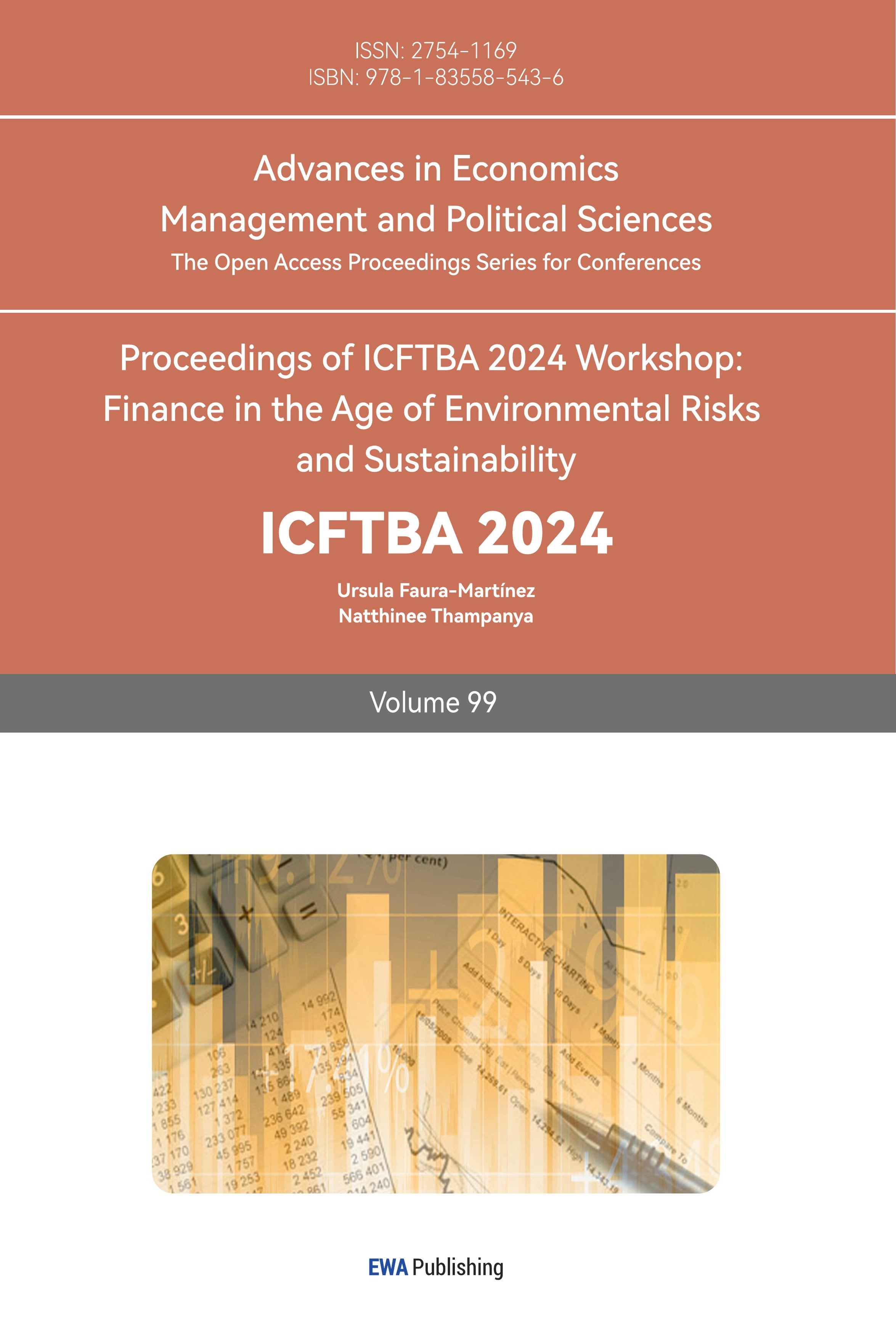1. Introduction
With the advent of a fast-growing economic era, several developments have been spurred, among them the progressive improvement and changing landscape of higher education. The relationship between a country's degree of education and its economic growth rate is well proven. The link between financial development and education is intricate and multifaceted. Evidence suggests that investing in education can increase the potential talent pool, improve innovation and abilities, and significantly contribute to economic growth. A World Bank 2020 study indicates that an additional year of education can raise a country's average annual GDP growth rate by 0.5 percent [1].
This interdependence must be appropriately acknowledged by policymakers who favor sustainable economic growth. Prior research has demonstrated a direct relationship between economic expansion and educational achievement. Higher education does more than make labor more efficient; it encourages quick and steady economic growth at the federal level. Similarly, Hanushek and Woessmann [2] posit a significant correlation between economic progress and the cognitive abilities fostered by high-quality education. Although these studies offer valuable insights, they often need to consider regional variations and potential future economic and educational policy developments.
This study addresses this gap by employing a comparative analysis to examine the correlation coefficients between GDP growth and education levels in China, Germany, and the United States. This will assist in the identification of potential relationships and developments for future education and economic policy growth.
We want to respond to the following queries:
(1). What is the relationship between economic growth in these countries and higher education?
(2). What are the variations in this relationship between these countries?
This study addresses this gap by employing comparative analyses to examine the correlation coefficients between GDP growth and education levels in China, Germany, and the United States. The total value of GERD in the three countries can be seen in Figure 1 and Figure 2, as well as the value contribution from the four dimensions of R&D performance. This will help to identify potential relationships and developments for future education and economic policy growth. This research provides insights into the relationship between higher education and economic growth, aiding policy reforms to enhance national economies.
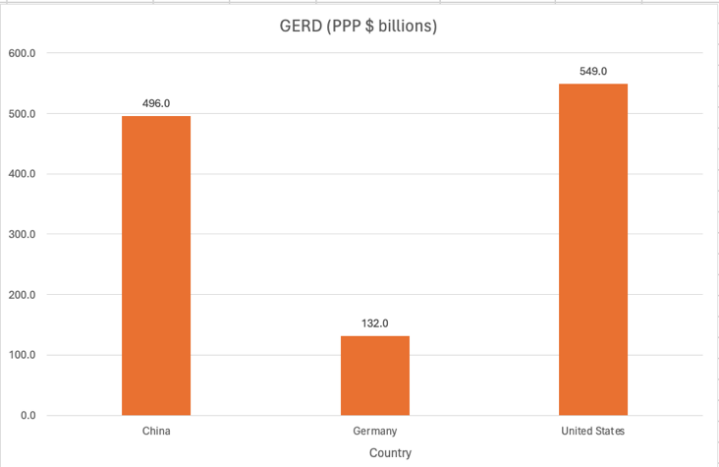
Figure 1: 2017 Gross expenditures on R&D for China, Germany, and the United States.
Source: https://ncses.nsf.gov/pubs/nsb20225
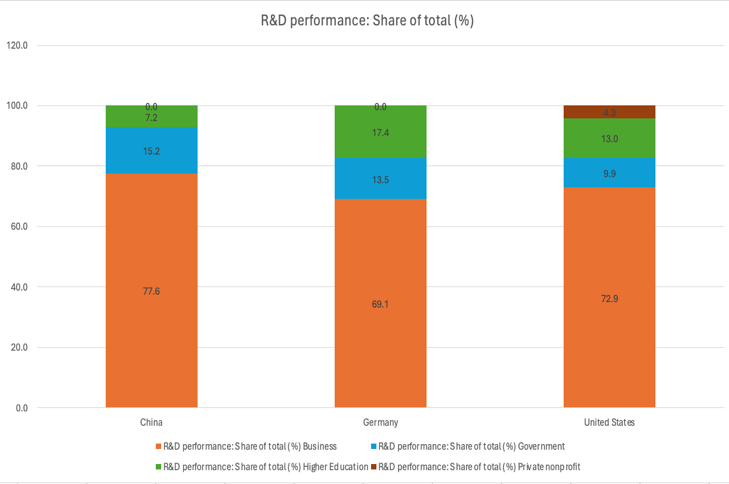
Figure 2: R&D performance, such as Business, Government, Higher Education, and Private Nonprofit in Total Share(%).
Source: https://ncses.nsf.gov/pubs/nsb20225
2. Case Descriptive
2.1. China
2.1.1. Event, Background and Development
In recent years, China has implemented significant reforms to its education system. The objective is to extend the reach of higher education to facilitate the country's rapid economic growth. China has invested heavily in higher education and has seen a significant increase in graduates. This expansion is critical to China's transition from a manufacturing economy to an innovation and technology-driven economy [3] [4]. The rapid expansion of tertiary education in China is reflected in increased enrolment and the establishment of new universities. According to the OECD [5], participation rates in tertiary education have risen significantly, reflecting government action to improve educational outcomes and support economic development.
2.1.2. Current Status, Affected Region or Demographic, Description of Major Issues and Importance of Solutions
China's gross expenditure on research and development (GERD) has reached US$496 billion (on a purchasing power parity basis), with the business sector contributing 77.6 percent of this funding. This investment illustrates the significance of aligning educational and research and development (R&D) requirements to stimulate economic growth. The University Education for Market Economy Effectiveness [6] report indicates that these investments have demonstrably enhanced financial performance and innovative capacity. National policies focusing on improving the quality of education and strengthening industry-academia linkages are essential to sustain economic growth [2].
2.2. Germany
2.2.1. Event, Background and Development
Germany has a robust education system that combines vocational training and higher education. The government also works to improve the country's economy and education. The dual education system, integrating academic learning with practical training, has helped Germany become prosperous. Germany has a long history of vocational education, dating back to the 13th century [3]. These educational establishments provide curricula integrating theory and practice, equipping students with industry-ready skills. Research indicates that this model can sustain a highly trained labor force and foster economic expansion [4].
2.2.2. Current Status, Affected Region or Demographic, Description of Major Issues and Importance of Solutions
Germany's GERD is $13.20 billion (PPP), with significant contributions from businesses (69.1 percent) and the government sector (17.4 percent). The dual education system benefits all regions of Germany, especially those with a robust industrial base. By combining educational programs with the needs of the regional economy, Germany has maintained low unemployment rates and high economic productivity [5]. Still, one of Germany's problems is ensuring that its educational system keeps changing to keep up with technological developments and shifts in labor market demands.
2.3. United States
2.3.1. Event, Background and Development
Community colleges play a pivotal role in the health of local economies, offering accessible education readily available to the public. The higher education landscape in the United States comprises a diverse array of public and private educational institutions, including universities, vocational schools, and community colleges [3]. The American higher education system has historically played a significant role in social advancement, economic expansion, and innovation.
2.3.2. Current Status, Affected Region or Demographic, Description of Major Issues and Importance of Solutions
From Table 2, the United States has the highest GERD of the three countries, at $549 billion. Of this total, 72.9 percent is funded by the business sector. The substantial investment in research and development (R&D) illustrates the pivotal role of higher education in fostering innovation and economic growth. Community colleges are particularly influential in rural and lower economic areas and are especially effective in providing education and training that directly supports local economic development. Policies to increase the financing of community colleges and strengthen industry-academia-research partnerships can help address education and funding gaps [2] [7].
Table 1: Gross expenditures on R&D for selected countries by performing sector and source of funds: 2017 or most recent year.
Gross expenditures on R&D for selected countries, by performing sector and source of funds: 2017 or most recent year | |||||
Country | GERD (PPP $ billions) | R&D performance: Share of total (%) | |||
Business | Government | Higher Education | Private nonprofit | ||
China | 496.0 | 77.6 | 15.2 | 7.2 | NA |
Germany | 132.0 | 69.1 | 13.5 | 17.4 | NA |
United States | 549.0 | 72.9 | 9.9 | 13.0 | 4.3 |
Source: https://ncses.nsf.gov/pubs/nsb20225
3. Problem analysis
A theoretical framework is required to analyze the relationship between higher education and economic growth.
Theoretical Framework: The relationship between higher education and economic growth is well established in economic theory. The concept of human capital was introduced by Becker [8] and subsequently developed by Schultz [9]. Becker and Schultz postulated that investment in education can markedly enhance the productivity and efficiency of individuals, thereby contributing to overall economic growth. Higher education is pivotal in developing a knowledge-based economy, fostering innovation, and enhancing global competitiveness [2].
3.1. Problem 1: Disparities in Educational Funding and Access
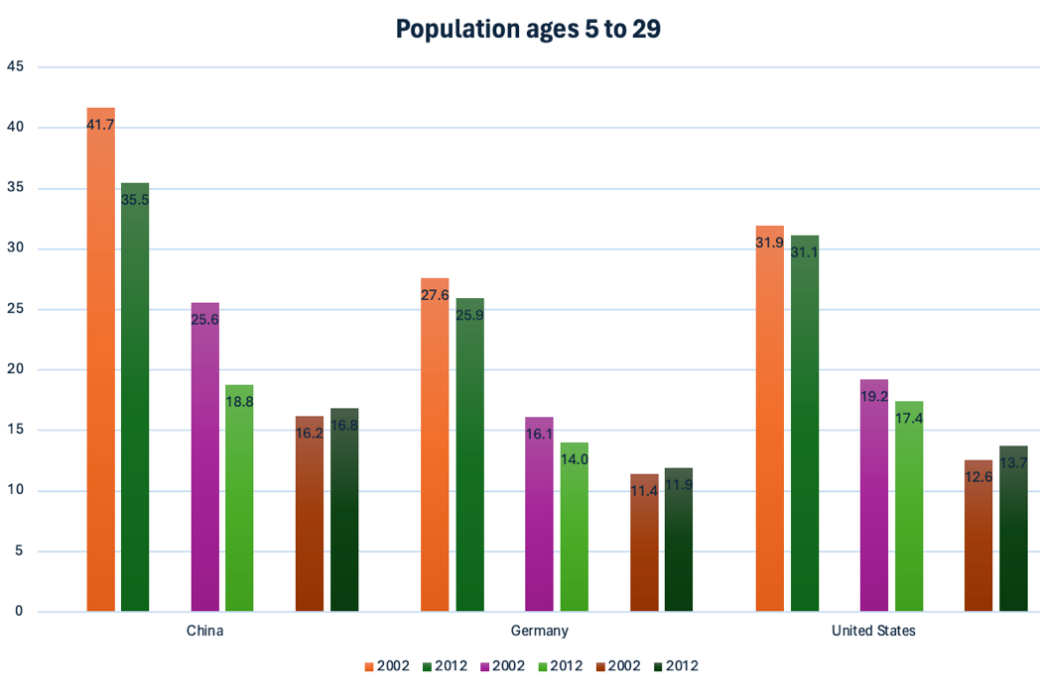
Figure 3: Percentage of population ages 5 to 29, 5 to 19, and 20 to 29, by country: 2002 and 2012
Source: https://nces.ed.gov/pubs2016/2016100/index.asp
3.1.1. Analysis Process
Another critical issue is the disparity in funding and access to tertiary education within and between countries [7]. In all three countries, the proportion of the population aged 5 to 29 years in education showed a declining trend from 2002 to 2012, highlighting the potential problem of sustaining participation rates in education. This trend is reflected in Figure 3, representing the population percentage by age group. There are still differences between the three countries regarding investment in and access to tertiary education. Disparities in education lead to more severe economic inequality.
3.1.2. Analysis Results
In the United States, community colleges are significant in terms of providing accessible education. However, they need to be more funded. This has a detrimental effect on both the quality of education and the capacity of these educational institutions to provide adequate service to their local communities [6]. Despite substantial investment in higher education in China, rural areas remain behind urban centers regarding accessibility and quality [5]. The Chinese government has initiated the Rural-Urban Integration Mutual Assistance Program (RUIMAP) to bridge this gap, yet the discrepancy still needs to be improved [10].
3.2. Problem 2: Ensuring Quality and Innovation in Higher Education
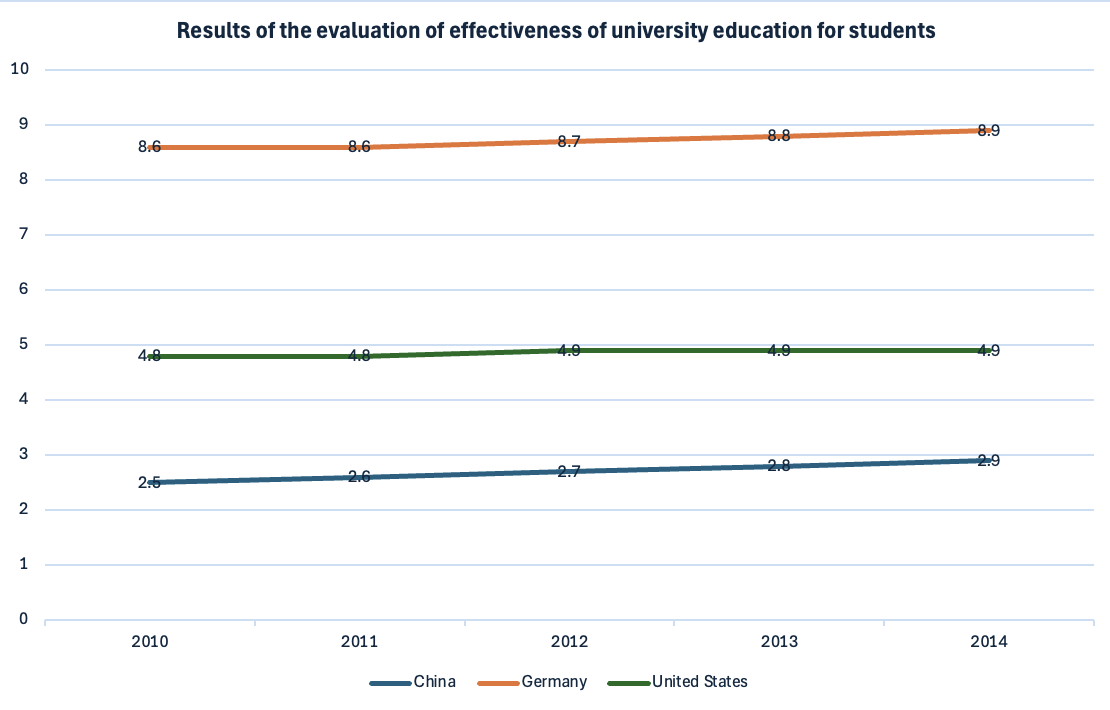
Figure 4: Results of the evaluation of effectiveness of university education for students
Source: https://doi.org/10.1108/ijem-02-2016-0041
Table 2: Results of analysis of connection between effectiveness of university education for students and economic development
| Connection between level of GDP and level of effectiveness of university education | Connection between level of GDP per capita and level of effectiveness of university education | Connection between level of global competitiveness of the country and level of effectiveness of university education | |||
Countries | Correlation level | Weight | Correlation level | Weight | Correlation level | Weight |
China | 0.92 | significant | 0.35 | not significant | 0.93 | significant |
Germany | 0.97 | significant | 0.98 | significant | 0.99 | significant |
United States | 0.99 | significant | 0.99 | significant | 0.99 | significant |
Source: https://doi.org/10.1108/ijem-02-2016-0041
3.2.1. Analysis Process
Figure 4 demonstrates that students in the United States and Germany rate the effectiveness of university education higher than in China. This correlation can be attributed to their higher investment in research and development and national policies. This can be seen in Table 4.1, which shows the effectiveness of university education over the years. Countries must ensure that their education systems can conduct high-quality research to drive technological advancement and economic growth [2][11].
3.2.2. Analysis Results
The United States leads the way in R&D investment, with GERD reaching $549 PPP billion, primarily funded by the commercial sector at 72.9 percent. This considerable investment supports a robust innovation system that contributes to economic growth [12]. Germany also places a premium on R&D, with its GERD amounting to $132 billion, supported by both business and government sectors. This dual support structure ensures that research programs are well-funded to align academic and industry needs [3]. China has made considerable progress in research and development (R&D), yet still needs to match the quality of R&D output in the United States and Germany. China is endeavoring to improve the quality of its research and innovation outputs [13].
4. Suggestions
4.1. Suggestion 1: Address Funding and Access Disparities
4.1.1. Argument
The alleviation of discrepancies in financial support and accessibility can assist in reducing the disparities caused by inequalities in education. Consequently, this contributes to the promotion of inclusive economic growth.
4.1.2. Supporting Theory, Data and Evidence
Education funding and access inequalities hinder higher education development and economic growth, especially during the pandemic in disadvantaged regions [1]. The OECD [5] identifies inconsistencies in education quality due to varied funding models, such as US state versus federal funding. Community colleges are vital in rural and low-income areas, providing education that meets local economic needs. Despite significant investments, rural areas in China still need higher education access than cities. Programs like China’s Rural-Urban Integration Mutual Aid Program (RUIMAP) aim to bridge this gap, but more support is required [10]. Addressing the funding and access gaps in higher education is essential to ensure equal access and maximize the economic benefits. Policies should focus on increasing funding for community colleges and closing the urban-rural education gap. This will ensure that all regions and populations can access high-quality education, generating more incredible economic benefits.
4.2. Suggestion 2: Invest in Quality and Innovation in Higher Education
4.2.1. Argument
A robust educational system is the engine of technological advancement and creates the groundwork for economic research. Enhancing the quality of education creates incredible room for innovation in higher education, which stimulates economic growth.
4.2.2. Supporting Theory, Data and Evidence
Investing in research and development (R&D) is closely tied to economic growth, with strong education systems developing essential cognitive skills. The United States and Germany are leaders in Gross Domestic Expenditure on R&D (GERD), supporting robust innovation systems [12]. The US leads with GERD at $549 billion, primarily funded by the commercial sector (72.9%). Germany's GERD is $132 billion, supported by both government and business sectors [5]. With GERD at $496 billion, China aims to enhance R&D quality through university-industry collaboration and increased research funding [13] [11]. Investing in quality and innovation in higher education is critical to sustaining economic growth. Policies should focus on improving R&D capabilities and promoting industry-university-research collaboration. This will help generate high-quality research and technological advances that drive economic growth. Sustained improvements in the quality of education and strong R&D programs can sustain progress and contribute to long-term economic prosperity.
5. Conclusion
This study highlights the critical role of higher education in driving economic growth. Our comparative analysis shows a strong positive correlation between educational attainment and GDP growth in China, Germany, and the United States. This relationship is particularly pronounced in Germany, where the dual education system combines vocational training with academic learning, aligning educational outcomes with industry needs. As a result, Germany boasts a highly skilled labor force, low unemployment, and high productivity levels [5][6].
In China, heavy investment in higher education has led to increased enrollments and the establishment of new universities, which have been crucial for the country's transition to an innovation-driven economy. However, the rapid expansion has also brought challenges, such as skills mismatches, with the education system needing to be fully aligned with labor market needs [10][13]. Despite these challenges, China’s gross expenditure on research and development (GERD) reflects its commitment to improving educational and economic outcomes [5]. The US has a diverse higher education landscape with the highest GERD among the three countries, primarily funded by the business sector. This significant investment supports a strong innovation ecosystem that contributes to economic growth [12]. However, gaps in funding and access to education, particularly in rural and low-income areas, present significant challenges.
The study emphasizes the necessity of tailoring education policies to each country’s specific economic needs. Demonstrating the efficacy of Germany's dual education system provides a potential model for other countries to emulate. Furthermore, the findings underscore the need for increased funding and equitable access to education, especially in regions with significant economic disparities. The study also highlights the pivotal role of innovation, research, and development in propelling economic growth, urging countries to invest in high-quality higher education and robust research programs.
Future research should investigate the long-term impact of integrating vocational training into higher education systems in different cultural and economic contexts. Additionally, it was necessary to examine the effects of digital transformation on higher education and its consequences for economic growth. It is recommended that policymakers consider adopting flexible education models to facilitate the rapid adaptation of educational provision to the evolving financial landscape and technological advances.
Finally, this study highlights the critical importance of higher education in economic development. Countries can improve their economic growth prospects by aligning educational programs with business demands, filling funding and access gaps, and investing in quality and innovation. Germany's dual education system is a successful example, and China and the United States may benefit from adopting a similar strategy. It is advised that policymakers prioritize the development of inclusive education systems that promote long-term economic growth and ensure that all regions and populations have access to quality education.
References
[1]. Al-Samarrai, S., Gangwar, M., & Gala, P. (2020). The Impact of the COVID-19 Pandemic on Education Financing. https://doi.org/10.1596/33739
[2]. Hanushek, E. A., & Woessmann, L. (2011). The economics of international differences in educational achievement - sciencedirect. sciencedirect. https://www.sciencedirect.com/science/article/abs/pii/B9780444534293000028
[3]. Wu, G. (2010). The inspiration given by the successful practice of development of higher vocational education in the developed countries. International Education Studies, 3(1). https://doi.org/10.5539/ies.v3n1p206
[4]. Ibrahim, A. (2020). Issues in higher education: Analysis of 2017 global knowledge index data and lessons learned. Higher Education Studies, 10(1), 91. https://doi.org/10.5539/hes.v10n1p91
[5]. OECD. (2022, October 3). Education at a glance 2022. OECD iLibrary. https://doi.org/10.1787/3197152b-en
[6]. Kuznetsov, N., Usenko, L., Ivanova, O., & Kostoglodova, E. (2017). Provision of effectiveness of university education on the market economy. International Journal of Educational Management, 31(1), 30–37. https://doi.org/10.1108/ijem-02-2016-0041
[7]. Brooks, R. (2023, October 31). What is the relationship between education and the economy?. North Wales Management School - Wrexham University. https://online.wrexham.ac.uk/what-is-the-relationship-between-education-and-the-economy/
[8]. Becker, G. S. (1964, January 1). Human capital: A theoretical and empirical analysis with special reference to education, Third edition. NBER. https://www.nber.org/books-and-chapters/human-capital-theoretical-and-empirical-analysis-special-reference-education-third-edition
[9]. Schultz, T. W. (1961). Human Capital Investment. The American Economic Review, 51(1), 1–17. https://doi.org/https://www.jstor.org/stable/1818907
[10]. Marginson, S. (2016). The worldwide trend to high participation higher education: Dynamics of social stratification in inclusive systems. Higher Education, 72(4), 413–434. https://doi.org/10.1007/s10734-016-0016-x
[11]. Zhang, L.-C., & Worthington, A. C. (2017). Explaining estimated economies of scale and scope in Higher Education: A meta-regression analysis. Research in Higher Education, 59(2), 156–173. https://doi.org/10.1007/s11162-017-9460-4
[12]. National Science Board. (2018). Science & Engineering Indicators 2018. National Science Foundation. https://www.nsf.gov/statistics/2018/nsb20181/
[13]. Jing, T., Chung, E., & Gregory, M. L. (2022, March 31). Vocational Education in China: Its history, roles, challenges and the way forward. JCSHD. https://www.semanticscholar.org/reader/c1778b7781556e16c2b5fb003de604895134c80d
Cite this article
Gu,S. (2024). The Impact of Higher Education on Economic Growth: A Comparative Analysis of China, Germany, and the United States. Advances in Economics, Management and Political Sciences,99,105-113.
Data availability
The datasets used and/or analyzed during the current study will be available from the authors upon reasonable request.
Disclaimer/Publisher's Note
The statements, opinions and data contained in all publications are solely those of the individual author(s) and contributor(s) and not of EWA Publishing and/or the editor(s). EWA Publishing and/or the editor(s) disclaim responsibility for any injury to people or property resulting from any ideas, methods, instructions or products referred to in the content.
About volume
Volume title: Proceedings of ICFTBA 2024 Workshop: Finance in the Age of Environmental Risks and Sustainability
© 2024 by the author(s). Licensee EWA Publishing, Oxford, UK. This article is an open access article distributed under the terms and
conditions of the Creative Commons Attribution (CC BY) license. Authors who
publish this series agree to the following terms:
1. Authors retain copyright and grant the series right of first publication with the work simultaneously licensed under a Creative Commons
Attribution License that allows others to share the work with an acknowledgment of the work's authorship and initial publication in this
series.
2. Authors are able to enter into separate, additional contractual arrangements for the non-exclusive distribution of the series's published
version of the work (e.g., post it to an institutional repository or publish it in a book), with an acknowledgment of its initial
publication in this series.
3. Authors are permitted and encouraged to post their work online (e.g., in institutional repositories or on their website) prior to and
during the submission process, as it can lead to productive exchanges, as well as earlier and greater citation of published work (See
Open access policy for details).
References
[1]. Al-Samarrai, S., Gangwar, M., & Gala, P. (2020). The Impact of the COVID-19 Pandemic on Education Financing. https://doi.org/10.1596/33739
[2]. Hanushek, E. A., & Woessmann, L. (2011). The economics of international differences in educational achievement - sciencedirect. sciencedirect. https://www.sciencedirect.com/science/article/abs/pii/B9780444534293000028
[3]. Wu, G. (2010). The inspiration given by the successful practice of development of higher vocational education in the developed countries. International Education Studies, 3(1). https://doi.org/10.5539/ies.v3n1p206
[4]. Ibrahim, A. (2020). Issues in higher education: Analysis of 2017 global knowledge index data and lessons learned. Higher Education Studies, 10(1), 91. https://doi.org/10.5539/hes.v10n1p91
[5]. OECD. (2022, October 3). Education at a glance 2022. OECD iLibrary. https://doi.org/10.1787/3197152b-en
[6]. Kuznetsov, N., Usenko, L., Ivanova, O., & Kostoglodova, E. (2017). Provision of effectiveness of university education on the market economy. International Journal of Educational Management, 31(1), 30–37. https://doi.org/10.1108/ijem-02-2016-0041
[7]. Brooks, R. (2023, October 31). What is the relationship between education and the economy?. North Wales Management School - Wrexham University. https://online.wrexham.ac.uk/what-is-the-relationship-between-education-and-the-economy/
[8]. Becker, G. S. (1964, January 1). Human capital: A theoretical and empirical analysis with special reference to education, Third edition. NBER. https://www.nber.org/books-and-chapters/human-capital-theoretical-and-empirical-analysis-special-reference-education-third-edition
[9]. Schultz, T. W. (1961). Human Capital Investment. The American Economic Review, 51(1), 1–17. https://doi.org/https://www.jstor.org/stable/1818907
[10]. Marginson, S. (2016). The worldwide trend to high participation higher education: Dynamics of social stratification in inclusive systems. Higher Education, 72(4), 413–434. https://doi.org/10.1007/s10734-016-0016-x
[11]. Zhang, L.-C., & Worthington, A. C. (2017). Explaining estimated economies of scale and scope in Higher Education: A meta-regression analysis. Research in Higher Education, 59(2), 156–173. https://doi.org/10.1007/s11162-017-9460-4
[12]. National Science Board. (2018). Science & Engineering Indicators 2018. National Science Foundation. https://www.nsf.gov/statistics/2018/nsb20181/
[13]. Jing, T., Chung, E., & Gregory, M. L. (2022, March 31). Vocational Education in China: Its history, roles, challenges and the way forward. JCSHD. https://www.semanticscholar.org/reader/c1778b7781556e16c2b5fb003de604895134c80d





